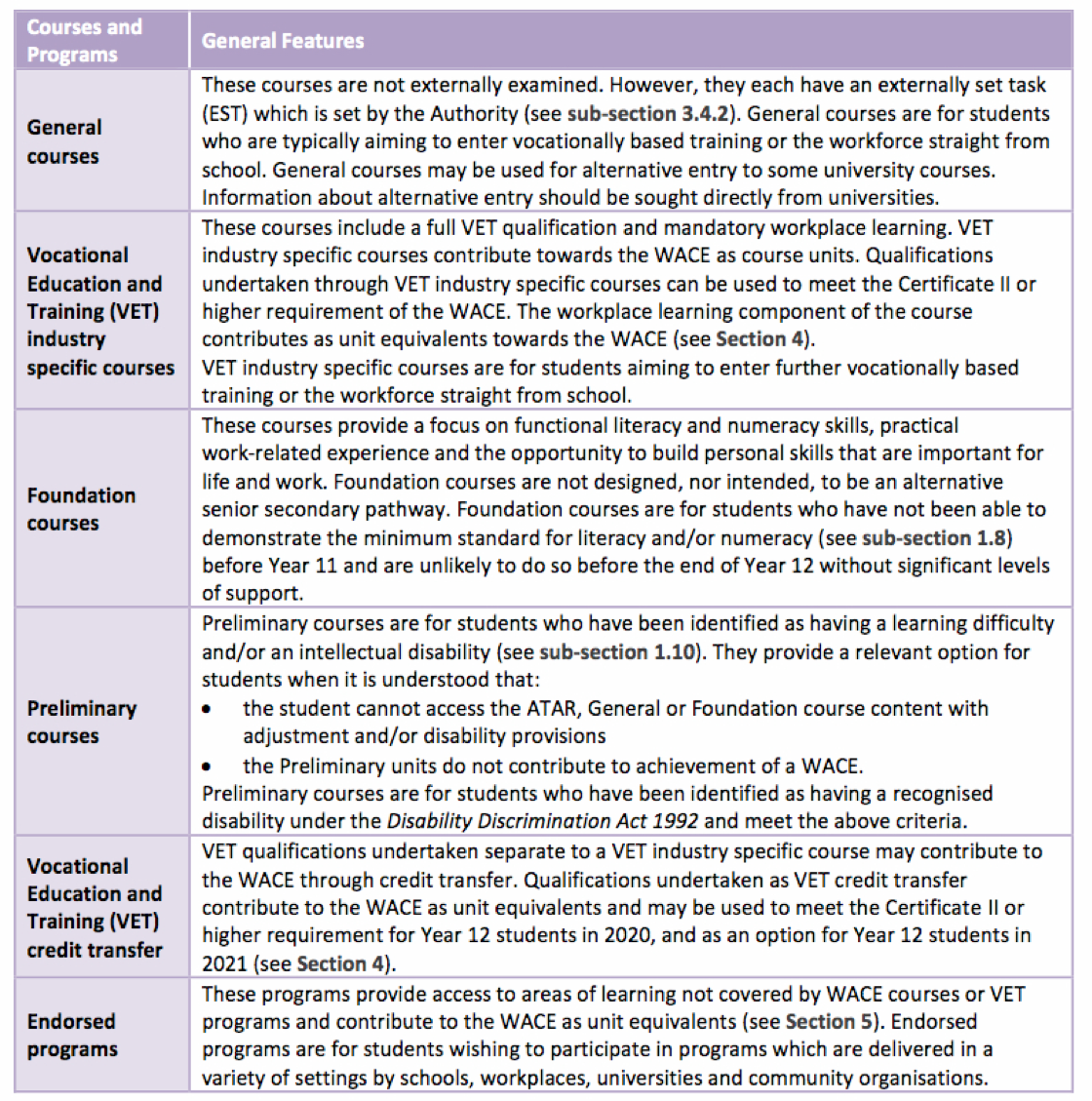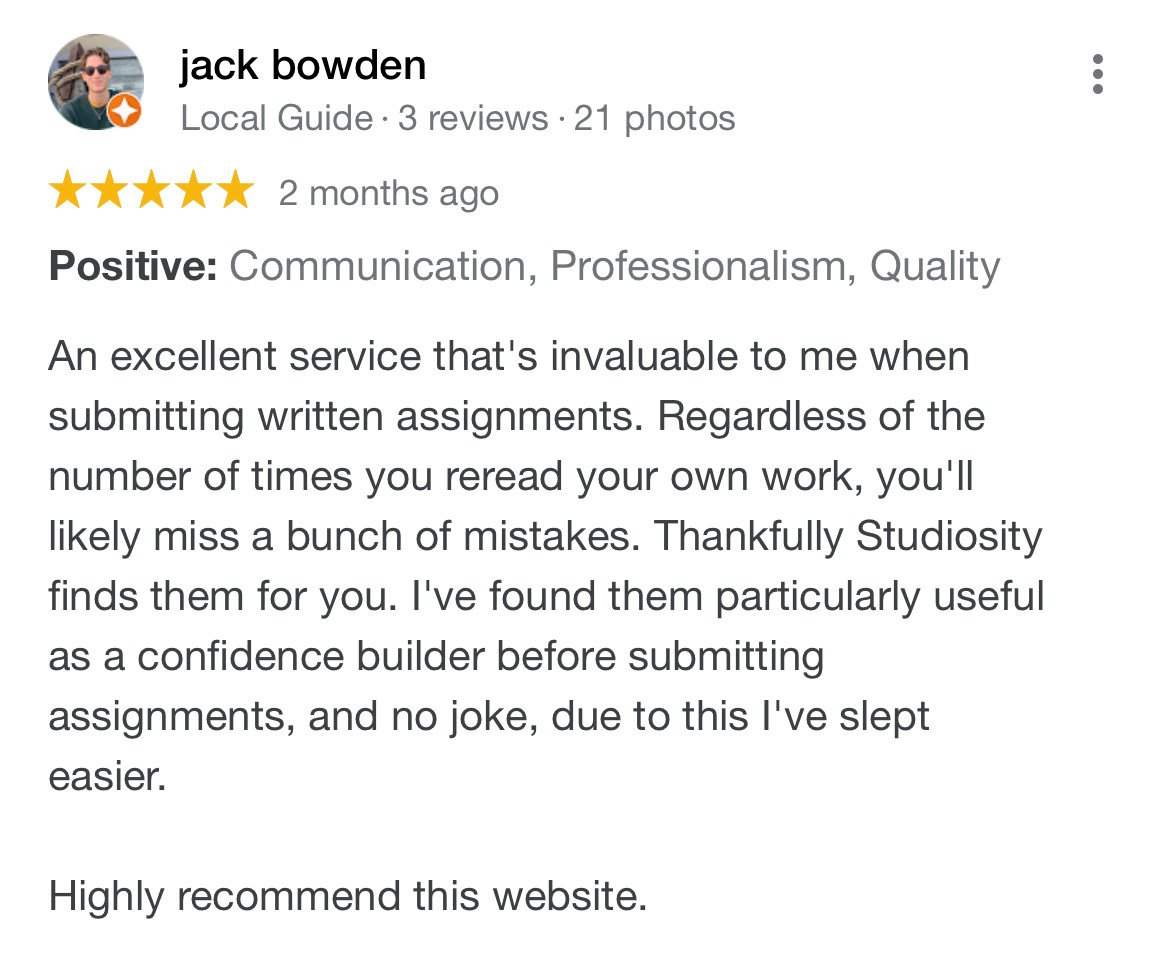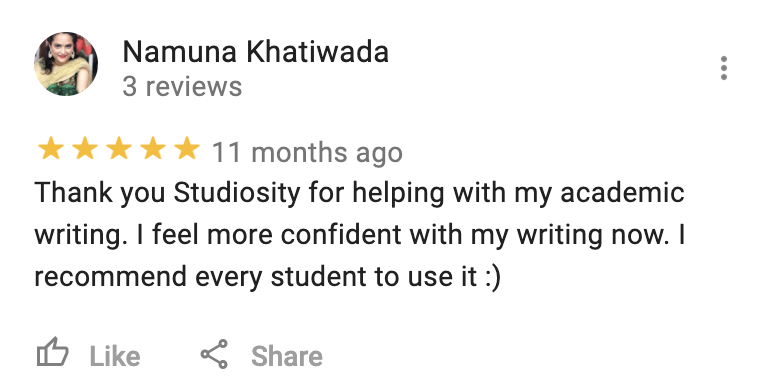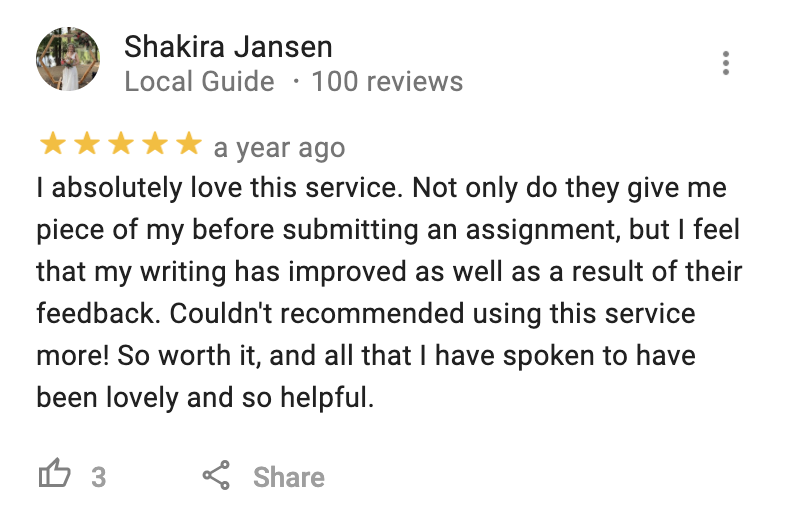Geoff Kinkade is former Principal Consultant, Gifted & Talented in the WA Department of Education, and still teaches and consults for Gifted Education at regional, state, national, and international levels. He is also a member of Studiosity's Academic Advisory Board, and lends his expertise here to simplify, for parents and families, the recent WACE requirement changes.
The Western Australian Certificate of Education (WACE) is the certificate that students receive on successful completion of the WACE requirements at the conclusion of their senior secondary education. It is recognised nationally in the Australian Qualifications Framework (AQF), by universities and other tertiary institutions, industry and training providers.
Until recently students could achieve their WACE by completing:
- a minimum of five courses in Year 12 of which a minimum of four must be Australian Tertiary Admissions Rank (ATAR) courses, or
- complete four General Courses with a Certificate II or higher (General Pathway with Vocational Education and Training (VET)).
What has changed about completing the WACE?
Students beginning Year 11 in 2020 can now select a third study pathway of five 'General Courses' to complete their WACE.
As with any change in an established system there has been some confusion. Students and parents wonder about the reasons for the changes and the effects these changes will have on each student’s education. Those most affected are the current Year 11s, as well as Year 10s.
For educational reasons it seems to make sense to have university aspirants and students wanting trade and non-university post-school options joined by a middle path, an additional option. However this option is so laden with information and courses and program categories, that it has created additional confusion.
Wading through the information on the School Curriculum and Standards Authority site doesn’t make it any easier to get a clear understanding. The most relevant information from the SCSA site is summarised below:

What are 'General Courses'?
General Courses are subjects offered across all learning areas, and include English, Mathematics Essential, Accounting and Finance, Biology, Human Biology, Chemistry and Physics - and align closely to ATAR courses.
For General Courses, in addition to ongoing assessments set by schools, the School Curriculum and Standards Authority (SCSA) sets an external common assessment that all students sit in Year 12. Students who choose General Courses can enter employment, vocational education and training, or choose a university pathway.
With the introduction of this third pathway, all other requirements to achieve a WACE remain unchanged - they are:
- a literacy and numeracy standard,
- breadth and depth requirement, and
- an achievement standard (a minimum number of C grades).
"In the past you chose ATAR courses if you wanted to go to university and VET courses if you wanted to link into training, and this middle ground gives students an option for both.”
- Hon Sue Ellery BA MLC, Minister for Education and Training
WACE further information
https://senior-secondary.scsa.wa.edu.au/the-wace
https://senior-secondary.scsa.wa.edu.au/further-resources/wace-manual
What are the non-ATAR Courses and Programs?

WACE Manual 2020 School Curriculum and Standards Authority
More ATAR Course Information can be found at WA Government School Curriculum and Standards Authority.
Why this change? Why now?
What could be the reasons for the additional option? There seems to be an “add-on” element rather than a grass roots need for the new pathway. The distinction between ATAR and non-ATAR subject selections already existed.
One conspiracy theorist says that the changes to the WACE General Requirements are needed because the subject choices of current Year 11 students has been seriously mishandled. It seems that a number of schools have approved student course choices yet the subject selection did not meet previous SCSA requirements.
This would have jeopardised WACE attainment for several thousand students. Consider also the dramatic consequences to the affected schools standing on the annual league ladder. So the additional option was created as a means to overcome the issues.
Do conspiracy theories help? It seems not.
WACE Literacy and Numeracy Standards
The level of literacy and numeracy we attain influences our effectiveness as adults and our opportunities for success. That's why increased importance is placed upon a significant attainment of these standards.
For the WACE literacy and numeracy standard, students may:
- pre-qualify through achieving Band 8 or higher in the reading, writing and numeracy tests of the Year 9 National Assessment Program – Literacy and Numeracy (NAPLAN), or;
- demonstrate the minimum standard of literacy and numeracy by successfully completing the relevant components of the Online Literacy and Numeracy Assessment (OLNA) in Year 10, 11 or 12.
Literacy and Numeracy Assessment (OLNA) further information: https://senior-secondary.scsa.wa.edu.au/assessment/olna
Are these standards part of a 'world class' education?
Including a literacy and numeracy standard for WACE attainment seems to make sound educational sense.... unless the standards are set very low, which they are (Band 8 Year 9 NAPLAN). Western Australia is setting a minimum level for students, having experienced 12 years of formal schooling, that corresponds to moderately high attainment at Year 8 level.
NSW uses the same criteria. What value-adding is occurring for low Literacy and Numeracy students, during six years in secondary schools?
How do we know that students in Years 7 to 10 are receiving educational experiences that specifically improve their Literacy and Numeracy, based on need? Learning at the point of error, for instance.

Most school educators and many university lecturers are concerned about the poor skill standards of secondary school graduates. The need to assess aspirant teachers for competency in Literacy and Numeracy is an indication of that concern. Yet once again, the required minimums are very low.
It’s probable that Literacy and Numeracy problems are being perpetuated and likely that we are worsening them when secondary school teachers have Literacy and Numeracy skills that are only as good as half the students in their senior classes. Some will say that the WACE situation is addressed in part by Online Literacy and Numeracy Assessment. Yet OLNA testing is measurement, not instruction.
And it’s catch-up testing. It’s for those who don’t meet the Year 9 NAPLAN standard.
A serious risk is that rather than addressing Literacy and/or Numeracy learning issues, the more likely path is that teachers will teach to the OLNA test. Just like some teachers teach to NAPLAN.By requiring low minimum standards in Literacy and Numeracy in the final years of secondary schooling, we have all but given up on those who can benefit the most from tailored instruction.
Improved Literacy and Numeracy begins with early evaluation and specific strategies. Monitoring and reporting on program effectiveness and student progress is essential. It starts long before Year 12. Is it time for us to consider more formal assessment at Year 10? The benefits of such assessment go well beyond Literacy and Numeracy. Are we so afraid to use lack of attainment or even failure as means to provide realistic feedback to students? Instead we set up requirements so that just about everyone can meet them?
I would not call that a 'world class education'. Not by a long way.







